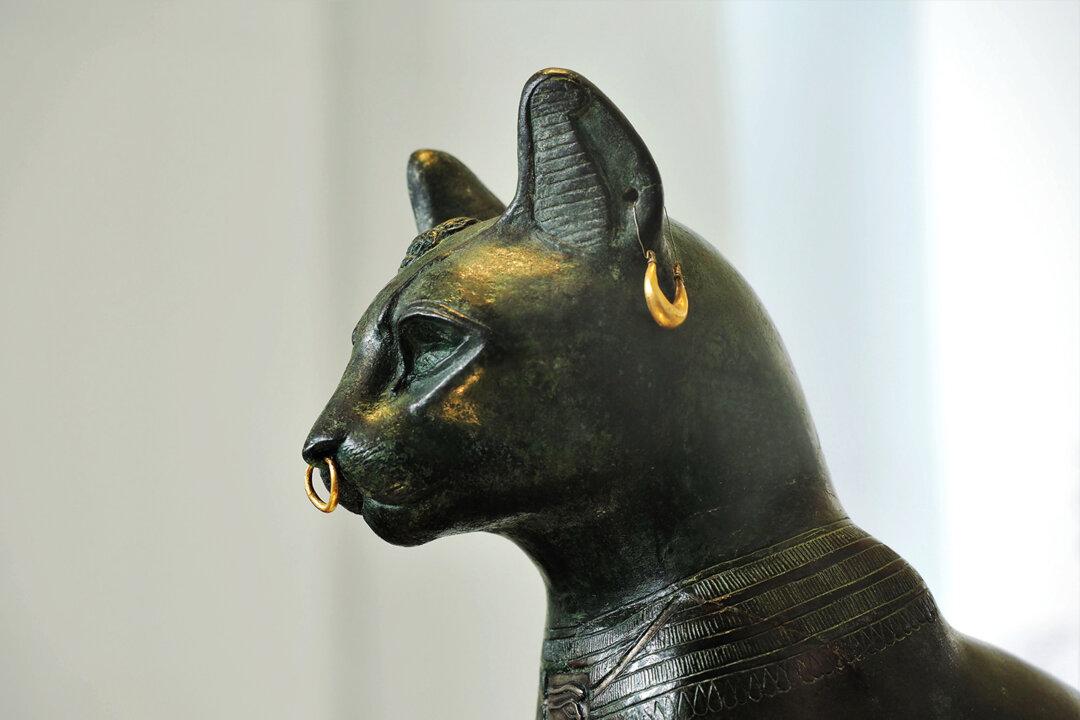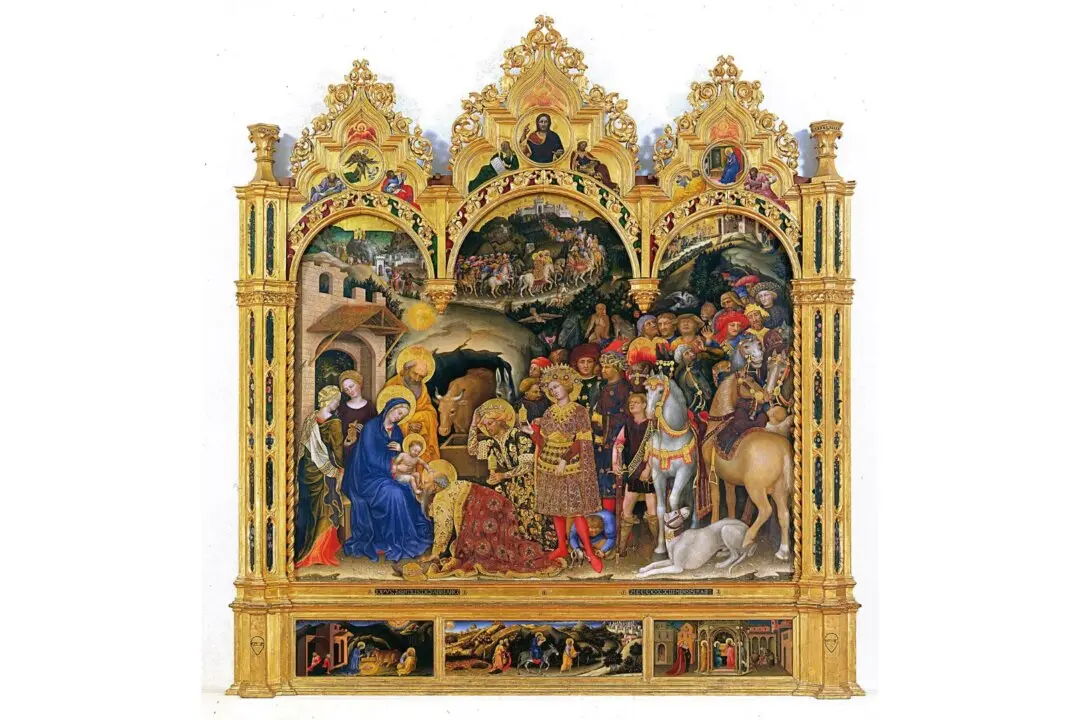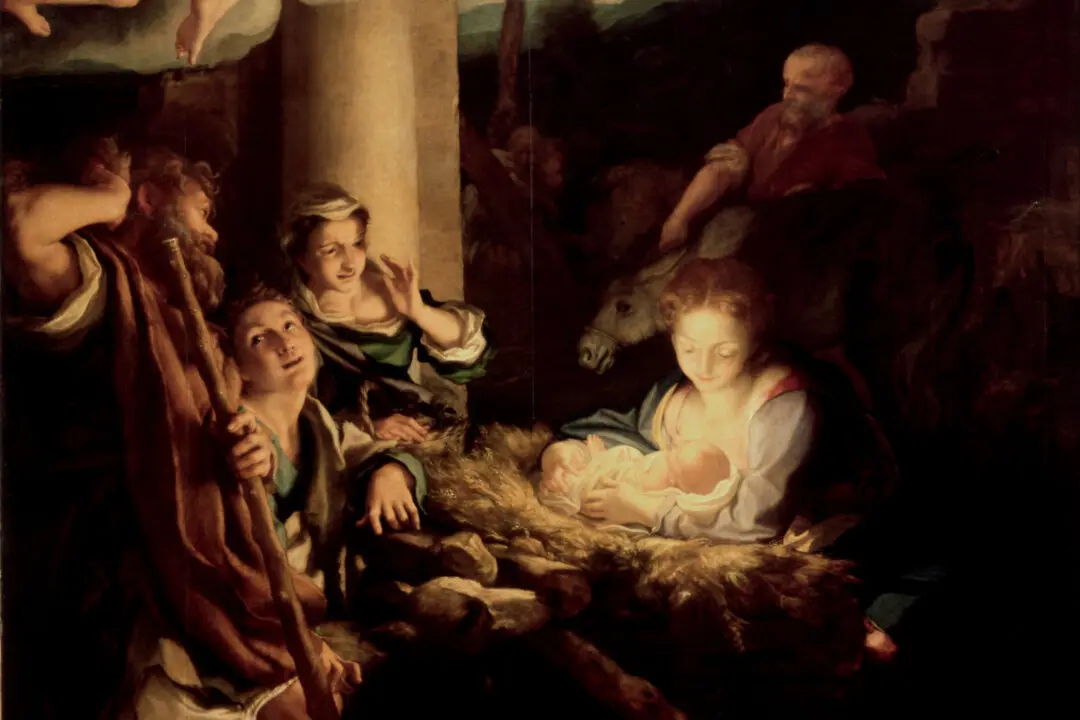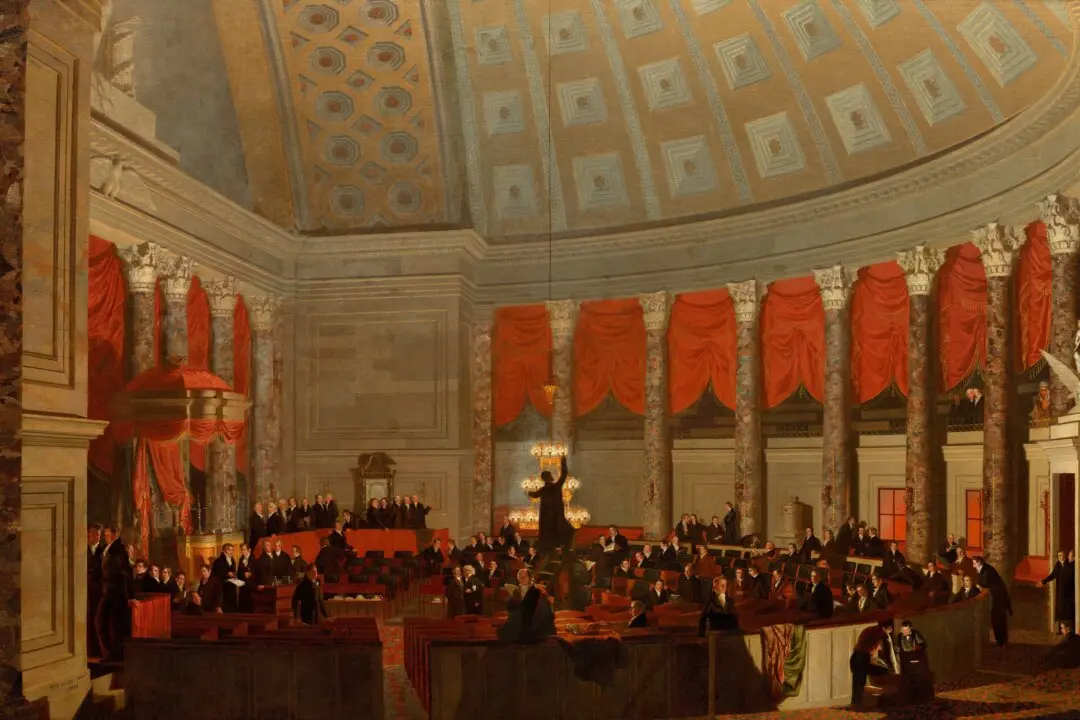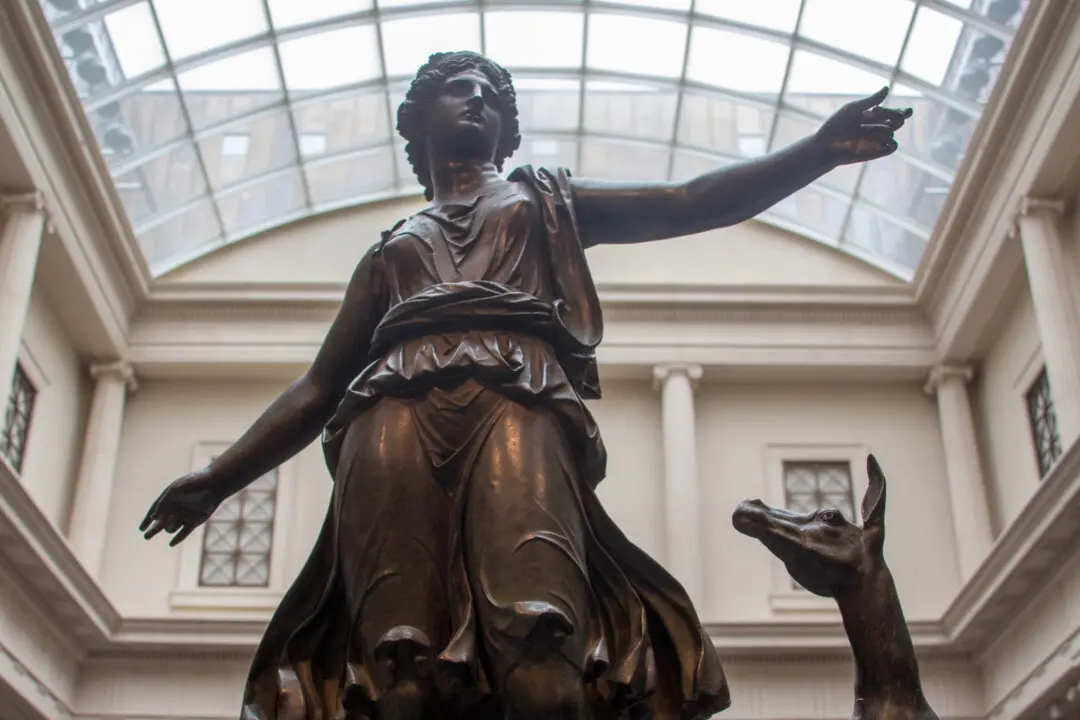Cats have tangled a spell around owners and inspired fine art for eons. The early civilization most linked with a cultural and artistic reverence for cats is that of ancient Egypt.
This connection goes back more than 5,000 years. Initially, felines were admired for their ability to protect pharaohs from predatory snakes and scorpions. During the Middle Kingdom (around 2030–1650 B.C.), cats were domesticated. Their useful deft hunting skills of mice and other vermin, who ate valuable grain and spread disease, had become apparent. The earliest surviving ancient Egyptian images of cats—a three-dimensional feline representation in the form of a cosmetic vessel and a cat depiction in a tomb—date from this period.

